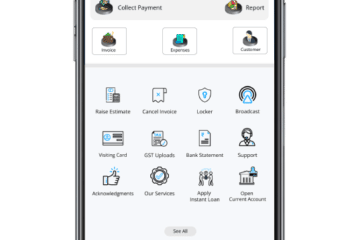7. Best care when using the equipment | 7 forklift safety tips
Check out 7 forklift safety tips
The forklift is equipment that needs to be used with care, following safety standards, as this way the chances of accidents involving the user, third parties and the materials being handled are reduced.
There are safety items from the forklift itself (some already integrated into the equipment) that need to be used correctly to ensure effective safety.
The ideal is to offer training courses and lectures so that employees are aware of safety procedures and are always updated on the subject.
Check out 7 Forklift Safety Tips You Need to Follow!
1. The use of a seat belt is mandatory on a forklift
Forklift safety is affected by its instability. Its center of balance is triangular, which contributes to the vehicle tipping over. As this is heavy equipment, the operator is subject to the real risk of being crushed.
The forklift works following the same principle as the seesaw, with the load placed on the forks and balanced by the weight of the equipment. The center of support (rotation) is the center of the front wheels. The counterweight consists of the forklift frame (combustion equipment) or the battery (electric equipment).
The forklift’s center of gravity is generally high. Since the wheel is low with 3 points of stability, the professional needs to be able to safely carry out the operations.
All manuals recommend the use of the seat belt, which is already installed, with 3 points. The use of this device is mandatory for different reasons: even at low speed, the forklift can tip over (due to holes or riskier maneuvers) and crush the operator.
It should not be believed that, during the tipping over, the user will be able to have balance to jump off the equipment and leave without injury. The correct thing is to stay attached to the vehicle by the belt. After the fall, he can unbuckle his belt and get out.
NR 12, in annex II, item 1.1, addresses the need for machine operators, such as forklifts, to have adequate training, including knowledge of traffic laws and occupational health and safety.
The same standard, annex XI, item 9, talks about the mandatory use of seat belts when using this equipment.
2. The presence of the fire extinguisher is essential:
The PQS (dry chemical powder) fire extinguisher is essential to combat signs of fire in the equipment. It is especially important for those powered by LPG, whose fire risk is even higher due to the fact that the gas is very flammable.
Fires can occur with sparks from the electrical system. They can also be a result of lack of cleanliness — keep the forklift free of oil and grease residues as they trap dust and general debris.
3. The flags are of different models:
The forklift must also have headlamps, or beacons, on independent controls: one for the headlamp and one for the tail lamp.
The headlight allows illumination in the direction of travel, as well as illuminating operating points when working with high loads.
The taillight, in turn, is required in two main situations. The first refers to displacements in reversal with high loads, in which the driver must not walk forward. The second situation is in displacements with loads in an inclined plane.
The rotating beacon is optional but helps to improve safety on a forklift. This is a rotating red or yellow light placed on the forklift. Its function is to warn people who are close to the equipment about its displacement or movement.
There is also a blue point (blue LED light), a high-performance indicator that indicates the presence of the equipment in the location. It replaces the reverse audible alert and reduces the risk of pedestrian accidents. The blue point is placed on top of the inside of the forklift, allowing pedestrians and other people to perceive light on the ground even when the room is lit. For Forklift Rental Click here
There is also a flag called red safety (or blue safety, depending on the color of the light). Made up of two parallel light sources that actually give the impression of two eyes, it is usually installed on top of the forklift, projecting a red light on the ground that signals the path of the equipment and serves as an alert for pedestrians. It has a focused focus and high brightness.
4. Cameras optimize operator’s vision:
A good view of the operator allows for greater efficiency and faster work. The camera system improves vision and increases forklift safety.
In the most modern equipment, the lifting towers have greater height, which makes it difficult to see the forks.
With a good camera system, the operator will have a clear view of the forks and surroundings, eliminating the need for the operator to turn around.
Cameras can be installed on the forklift and crane, helping to reduce risk and damage, as well as improving ergonomics and productivity.
5. PPE are required to maintain forklift safety:
PPE (Personal Protective Equipment) must be used to ensure operator safety. They are purchased separately, provided by the company itself.
Are they:
safety glasses, as they reduce the incidence of dust and other particles, as well as minimize physical impacts;
gloves, which are used when transferring pallets, handling and stowing loads;
helmet, used whenever the forklift is being used;
ear protector, as it protects the operator’s ears and helps to optimize his attention, reducing the incidence of noise.
6. The horn is an alert and not a toy:
The horn was one of the first devices integrated into vehicles in general and whose objective is exclusively to alert third parties, preventing accidents. Unfortunately, its use has become so vulgar that drivers use it irresponsibly, simply for fun.
The forklift is no different: the horn improves safety, but only if used properly. This is because, as the operator honks unnecessarily, others will not take it seriously, and when the horn is sounded in a really necessary case, it may not have the desired effect.
Finally, check out other forklift safety tips:
- Respect the equipment load limit;
- Give preference to pedestrians;
- Keep the handbrake off and only brake slowly;
- Turn carefully and at low speed;
- Go down slopes in reverse;
- Do not drive with forks raised;
- Only transport with the forklift column facing backwards;
- Be careful when traveling over undulating floors, as forklifts are not designed to walk on them;
- Do not push the load with the forks to avoid damage to the load and machine;
- Do not use broken pallets;
- Don’t give a ride;
- Park only where appropriate and never leave the key in the ignition.
Do you already follow these procedures to ensure greater safety on a forklift? To improve your management, enjoy and see some tips on how to manage the logistics sector!



















[…] drivers may be familiar with the working of the air suspension on a vehicle. The system consists of two tanks (one small, the other large) with individual valves (one large) at […]
[…] So many forklifts and so little time The models and types of trolley are different and vary according to professional needs and the environment in which it will be used. […]